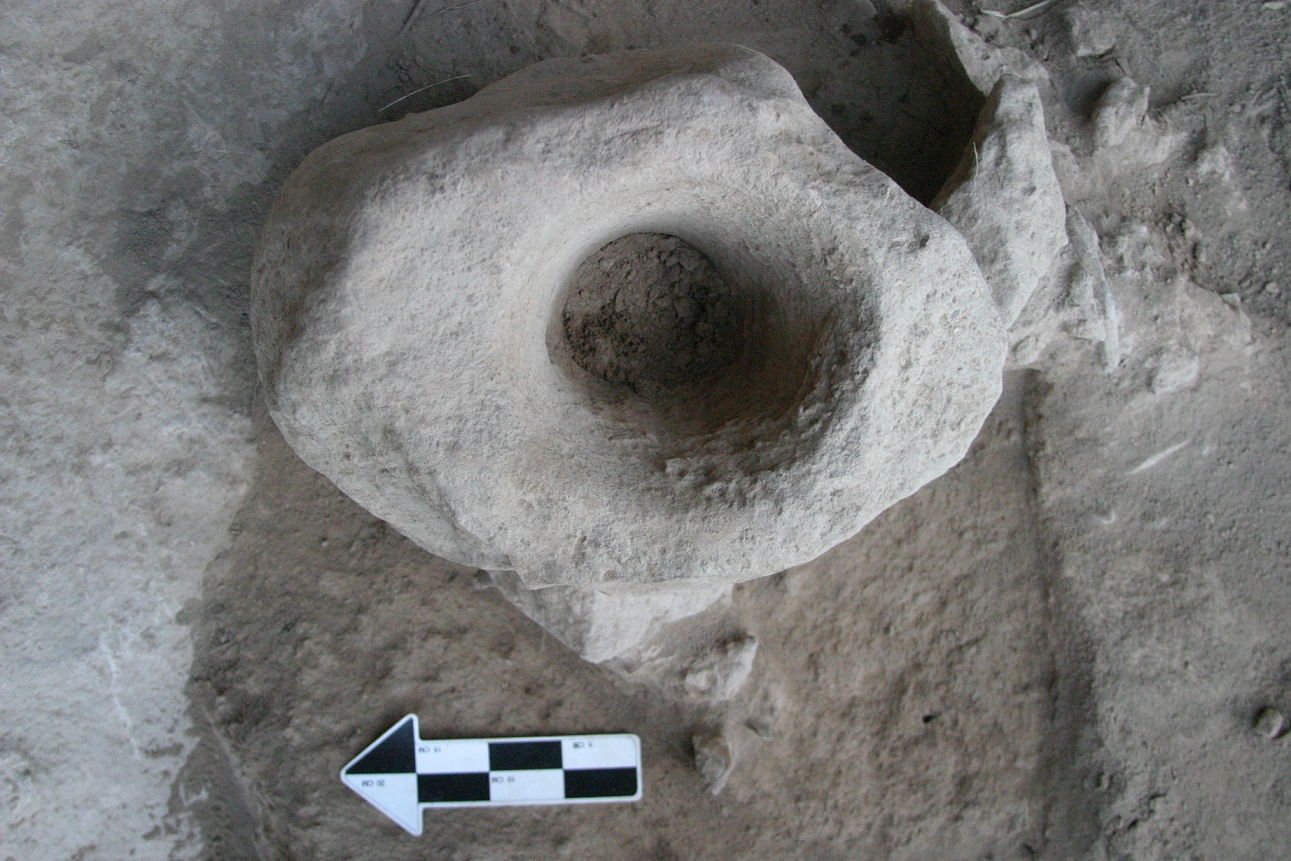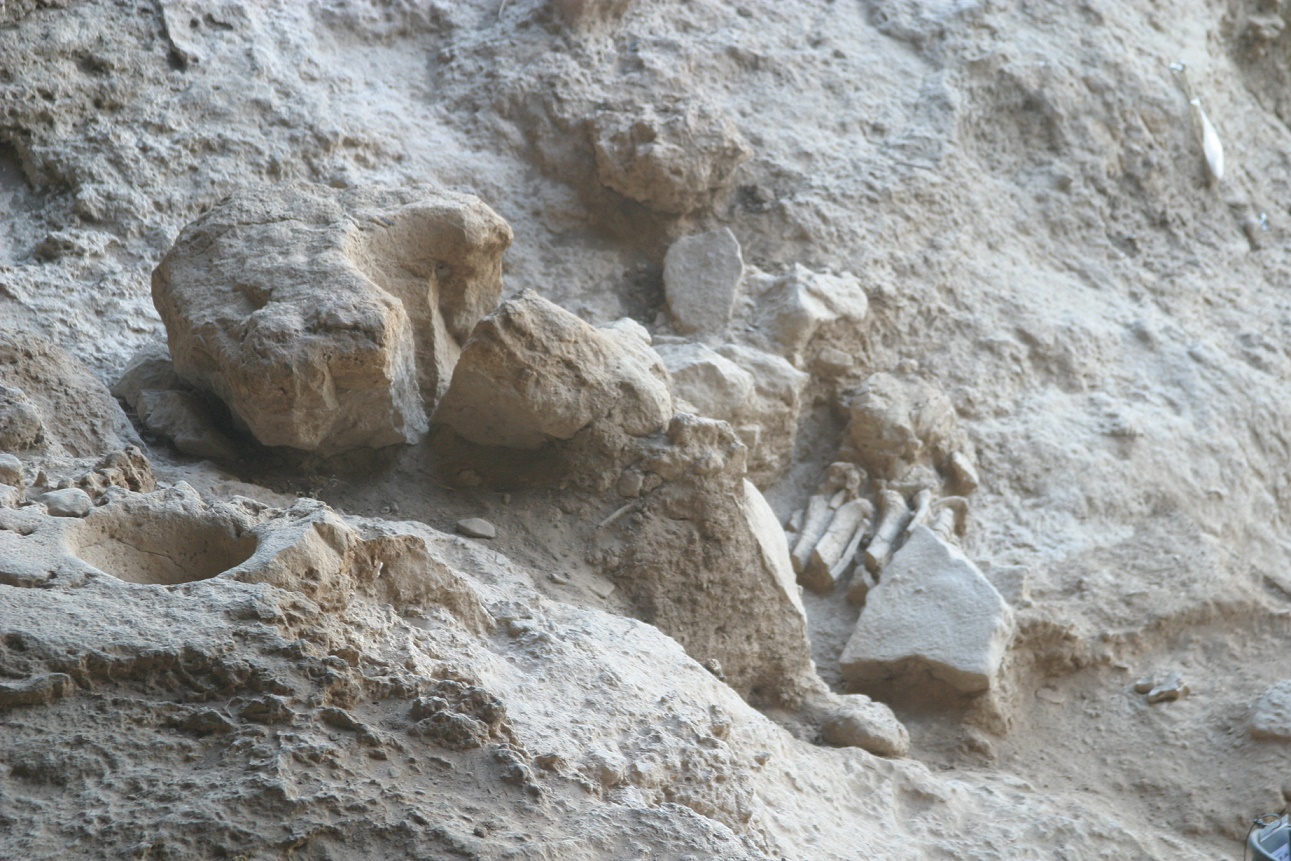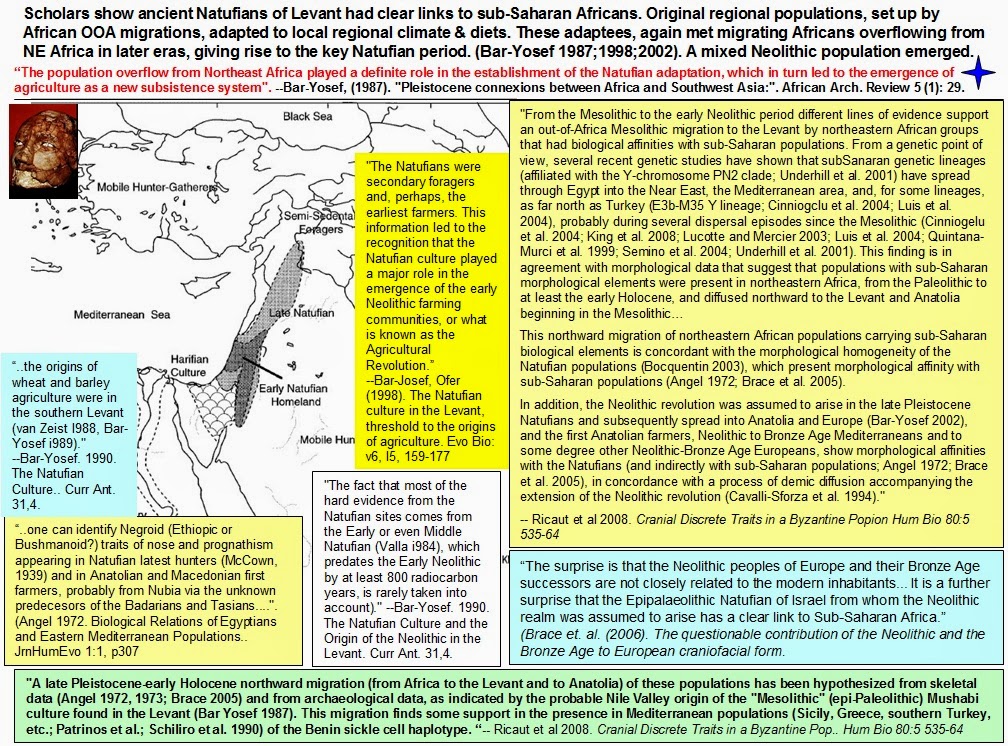Post by anansi on Aug 25, 2015 21:39:51 GMT -5
They decorated graves with flowers, held ceremonial meals before their funerals, and -- as a new study from the University of Haifa now shows -- the Natufians who lived in the region 15,000 -- 11,500 years ago also created massive mortars that were used to pound food at their burial ceremonies. The pounding sound of these large mortars informed the members of the community that a ceremony was underway.

A boulder mortar found at the Natufian burial site in Rakefet Cave, Mt. Carmel
The members of the Natufian culture lived during a period of change, and their communal burial and commemorative ceremonies played an important role in enhancing the sense of affiliation and cohesion among the members of the community," explain Dr. Danny Rosenberg and Prof. Dani Nadel, from the Zinman Institute of archaeology, University of Haifa, who undertook the study. The Natufians were among the first humans to abandon the nomadic lifestyle and settle in permanent communities, including the construction of buildings with stone foundations. It is even possible that they engaged in initial forms of cultivation. They were also among the first human cultures that established cemeteries -- defined areas in wish burial took place over generations, in contrast to the random burial seen in more ancient cultures. As research has progressed, scholars have gradually come to appreciate the importance the Natufians attached to burial in the social and ceremonial context. They were the first to pad their graves with flowers and leaves, and researchers from the University of Haifa have recently found evidence of large banquets held by the Natufians during funerals and commemorative ceremonies.

A boulder mortar at the Natufian burial site in Rakefet Cave, Mt. Carmel
Over the years, numerous tools have been found at Natufian residential and burial sites, but relatively little attention has been paid to one of the most remarkable types of tools: large boulder mortars. Dr. Rosenberg and Prof. Nadel were fascinated by these boulders, some of which are almost a meter high and weight 100 kilograms. "These are the largest stone artifacts that were hewn during this period in the Middle East, and indeed they are much larger than most of the stone objects that were hewn here in much later periods," Dr. Rosenberg explains. "These boulders have been found at Natufian sites in Syria, Jordan, Lebanon, and Israel, so that they clearly had a regional significance." Despite this, no one undertook an overall examination of the phenomenon of the boulders. "We were intrigued by the common features shown by these unusual tools, such as the raw material from which they were made, their dimensions, the hewing techniques involved, and their usage. Above all, though, we were fascinated by the settings in which the boulders were found and their association to burial ceremonies," the researchers noted.
archaeologynewsnetwork.blogspot.jp/2015/08/light-shed-on-complex-burial-customs-of.html#.Vd0kjSWqqkq
archaeologynewsnetwork.blogspot.jp/2015/08/light-shed-on-complex-burial-customs-of.html#.Vd0kjSWqqkq
klik to read more.
For newbies the Natufians are connected to the first farmers and have connection with Africans they were at the very least partially an African colony .

Who Were The Natufian Pioneers

